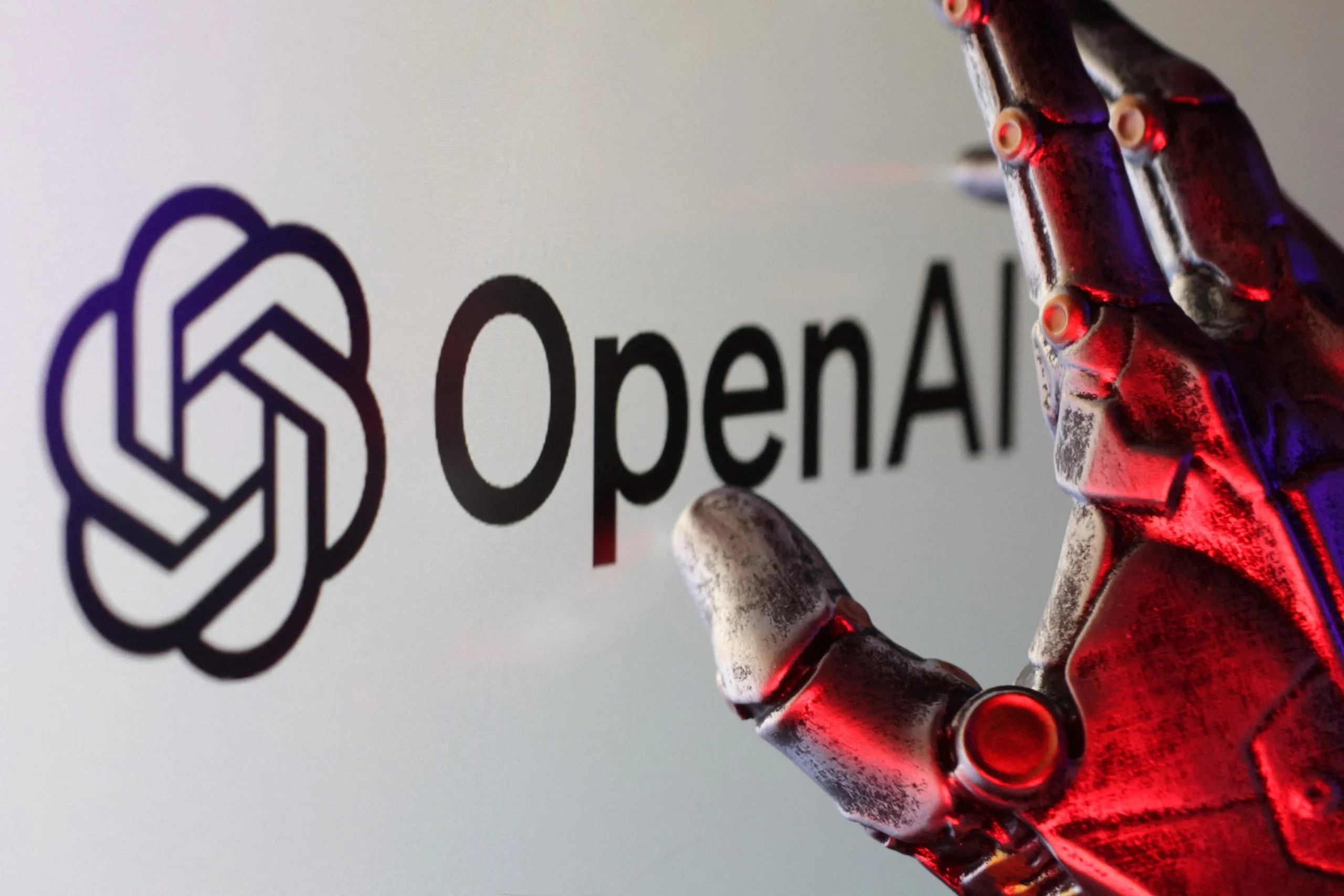Deep Fake
Blog Credit : Trupti Thakur
Image Courtesy: Google
Deep-fake technology began eight years ago with the use of “generative adversarial networks.” Created by computer scientist Ian Goodfellow, it essentially pit two AIs against each other to compete for the most realistic images. The results were far superior to basic machine-learning techniques.
Deep fakes are the process of mimicking the voice of a person. Talking in their tone and style; like a mimicry. However, here the mimicry is done using the software. Therefore, the deep fake is the process of mimicking a person’s voice using an online tool.
What is the issue? Why are deep fakes in news?
By the end of January 2023, netizens used the features of “voice cloning” and “speech synthesis” of Eleven Labs. Eleven Labs is an online site providing AI speech software. Using the features in the software, the netizens created voices of popular stars Emma Watson, Ben Shapiro, and Joe Rogan. But the messages were abusive and spread racism. Celebrities are now raising their voices against this. And thus, the voice of deep fakes in news.
What is Voice Deep-fake?
The voice created is artificial. However, it sounds human-like. The major challenge of a voice-deep fake is cloning a voice. It takes weeks or even months to clone a voice. Artificial Intelligence can create copies of voices after listening to the speaker for just 3 seconds! To create an audio file using an online tool, you just have to upload the voice of the person. The file should be at least 3 seconds long. The person should be continuously speaking in the audio file. After you upload this file, the software clones the voice of the speaker. You should then give the text. The software gives you the net output where Emma Watson or other stars (whose voice you uploaded) speak the text!
Benefits of Deep fake .
Deep-fake technology can provide the following benefits to marketers: Lowers the cost of video campaigns. Deep-fake technology can create better omnichannel campaigns. It can provide a hyper-personalized experience for customers.
Deep-fakes have garnered widespread attention for their potential use in creating child abuse material, celebrity graphic videos, revenge Graphic, fake news, hoaxes, bullying, and financial fraud. This has elicited responses from both industry and government to detect and limit their use.
Cloning a voice is a great way to create dynamic and unique audio and voice content. Among the other benefits of voice cloning software are it helps save time and money by allowing one to quickly create new content without having to record each piece individually.
The most impressive use of deep-fake technologies is their ability to create an interactive image and let people connect with people long after they have passed away.
Creating a deep fake today requires the use of a graphics processing unit (GPU). To create a persuasive deep fake, a gaming-type GPU, costing a few thousand dollars, can be sufficient. Software for creating deep fakes is free, open source, and easily downloaded.
Deep-fakes use different underlying AI technologies—notably autoencoders and generative adversarial networks (GANs). An autoencoder is an artificial neural network trained to reconstruct the input from a simpler representation.
Deep-fake media have already been used to commit crimes from harassment to fraud, and their use in crimes will likely expand.
Zao deep-fake app
It makes an original deep fake video that looks natural and indistinguishable from the original video within a few moments. It takes only a few minutes and can be used on Android or ios devices.
Though the concept of a deep fake is not technically illegal, its potential to create chaos and manipulate public perception makes it a threat, both at individual and societal scales. Intellectual property rights are given to a person for their creation. This can include books, paintings, films, and computer programs.
Another part of the IT Act is Section 66E. Deep fake crimes also violate this Section as the person’s privacy is breached for capturing, publishing or transmitting their images in mass media. “This offence is punishable with imprisonment of up to three years or a fine of up to Rs 2 lakh,”.
Good security procedures are the best protection
- Ensure employees and family know about how Deep faking works and the challenges it can pose.
- Educate yourself and others on how to spot a deep fake.
- Make sure you are media literate and use good quality news sources.
- Have good basic protocols – “trust but verify”.
One potential legal concern flowing from these fake images is defamation. A defamation cause of action could arise from an individual using Fake App or similar software to create a fake video of an individual saying or doing something that would injure the individual’s reputation if it were true.
While deep fakes may have started out as a harmless form of entertainment, cybercriminals are using this technology to carry out phishing attacks, identity theft, financial fraud, information manipulation, and political unrest.
Often, they inflict psychological harm on the victim, reduce employability, and affect relationships. Bad actors have also used this technique to threaten and intimidate journalists, politicians, and other semi-public figures. Furthermore, cybercriminals use deep fake technology to conduct online fraud.
Advantages And Disadvantages of Deep-fake Technology:
The benefits of Deep-fake technology
Deep-fake technology can provide the following benefits to marketers:
- Lowers the cost of video campaigns.
- Deep-fake technology can create better omnichannel campaigns.
- It can provide a hyper-personalized experience for customers.
Low-Cost Video Campaigns
Marketers using deep-fakes can save money on the budgets for their video campaigns using because you don’t need an in-person actor.
Instead of using an in-person actor, a marketer can purchase a license for an actor’s identity. You can then use previous digital recordings of the actor, insert the appropriate dialogue from a script for the actor and create a new video.
If you follow this process, you can also save time if you want to use other employees for ads.
To use example, if you want to use your business’ CEO for a new video campaign but they do not have time to record a new ad due to a busy schedule, you would only need a few previous recordings from past campaigns or interviews to make the new campaign.
As another benefit, you don’t even need to reshoot the video if it’s not what you wanted, you can just edit the deep fake accordingly.
Improved Omni-Channel Campaigns
Since you don’t need to use in-person actors for a campaign, you can repurpose existing content for various marketing channels for both less time and less money.
Instead of reshooting to fit different purposes for different channels, you can instead just edit or replace video cuts to create a paid social campaign.
Or, you can use voice synthesis to create new dialogue to create a podcast, radio, or streaming services ad.
Hyper-Personalization
Deep-fake technology has led to an upsurge in hyper-personalization.
A brand can provide individual customers with more relevant messaging and experiences based on their personal preferences, such as their ethnicity or skin color.
For example, if a customer was of a different ethnicity than a brand’s model for their marketing.
Deep-fake technology would allow you to alter the skin tone of that model so the customer can experience what the product would look like on their skin tone.
This process can help your brand increase inclusivity and reach a broader market with campaigns.
Deep-fake disadvantages
Unfortunately, deep-fake technology has the potential to be used for malicious purposes just because of its sheer power behind it.
For a marketer, this can mean a fake customer complaint, a fake product review, as well as a decrease in trust from customers.
Lack Of Trust Or Ethics Issues
The most obvious impact of deep-fake technology is that it can be used to create a fake video, so ascertaining the authenticity of a piece of content has become more difficult.
If you could tell whether or not someone’s image was actually them or not before viewing a video, it would still be impossible for anyone who didn’t know the person on a personal level.
If a marketer or brand uses a deep-fake video, a consumer may feel manipulated by the campaign and not trust the brand in the future.
For example, it’s possible to use deep-fakes to create a fake review, this would be considered unethical.
On the other hand, if a brand uses deep-fakes to elevate the brand’s storytelling, this would be considered ethical.
Scamming Increases
Deep-fake technology may also increase the number of scams online, you could create false accusations or complaints against companies.
A deep fake such as this is made by taking a recording of an actual incident and then altering the audio with new dialogue to mislead viewers.
An example of this happened recently, a German energy firm’s U.K. subsidiary handed around £220,000 to a Hungarian bank account after a swindler used the power of deep fakes to synthesize the CEO’s voice.
You could also use deep-fakes to make product reviews that are fakes, to make your product more appealing than they actually are.
Blog By: Trupti Thakur

09
FebDeep Fakes – Voice and Face
Feb 09, 2023Recent Blog
The Open Weight Language ModelApr 03, 2025
Asia Cup 2025Apr 02, 2025
The CrocodilusApr 01, 2025
SARATHIMar 31, 2025
PM WANIMar 28, 2025




